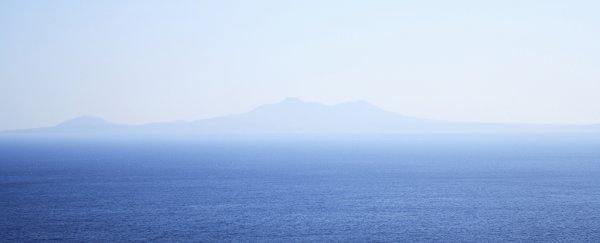You may never have heard of the small Japanese island of Esanbe Hanakita Kojima, but it's just hit the headlines after disappearing into the ocean – apparently without anyone noticing for quite some time.
A combination of wind and the impacts from drift ice is thought to have sunk the island beneath the waves, as it stood just 1.4 metres (4.6 feet) above the surface when it was last measured in 1987.
While the tiny piece of land was too small to be of any use, it had an importance beyond its size: before it disappeared, it marked the western edge of a disputed island chain Japan calls the Northern Territories, while Russia says it's the Kuril islands.
So now Japan's territory has shrunk by about half a kilometre (nearly a third of a mile). Esanbe Hanakita Kojima was 500 metres (1,640 feet) off the shore of Sarufutsu, a village at the edge of Hokkaido island.
It was only when author Hiroshi Shimizu visited Sarufutsu to continue writing about Japan's "hidden" islands that the disappearance of Esanbe Hanakita Kojima was noticed, The Guardian reports.
Esanbe Hanakita Kojima isn't the only island to be swallowed by the sea this year – last month the Hawaiian archipelago's East Island met a similar fate.
In that case, surging sea levels caused by the ferocious Hurricane Walaka were blamed, whereas with Esanbe Hanakita Kojima the vanishing is attributed to natural forces of erosion.
Now a coast guard visit is planned to confirm the island really has disappeared – though it may have been underwater for some time already. Locals say they avoided the area as it was marked as an underwater reef on maps.
The island was one of 158 that Japan officially named in 2014 in a bid to extend and clarify its territorial reach, with Russia making a similar move. The countries are keen to stake claims to islands with valuable natural resources, including gas and oil, reports Newsweek.
Esanbe Hanakita Kojima wasn't specifically disputed, but was an important marker. International law states islands can only be named if they're above the water line at high tide, which seems a fair definition; Japan may have to retrace its borders.
For now the Kuril islands or Northern Territories, separating the Sea of Okhotsk from the north Pacific, remain under Russian jurisdiction, at least until the next island disappears from the map.
Rising sea levels caused by climate change are putting many remote islands at risk, even if those in this particular region aren't in immediate danger.
Wind and waves are also a threat, and scientists are worried about the potential impact of increased storm activity and erosion on barrier islands – islands which help protect the mainland coast from the brunt of the weather.
It would seem that it was changing weather conditions that accounted for this particular Japanese island. So long, Esanbe Hanakita Kojima, we hardly knew you.
